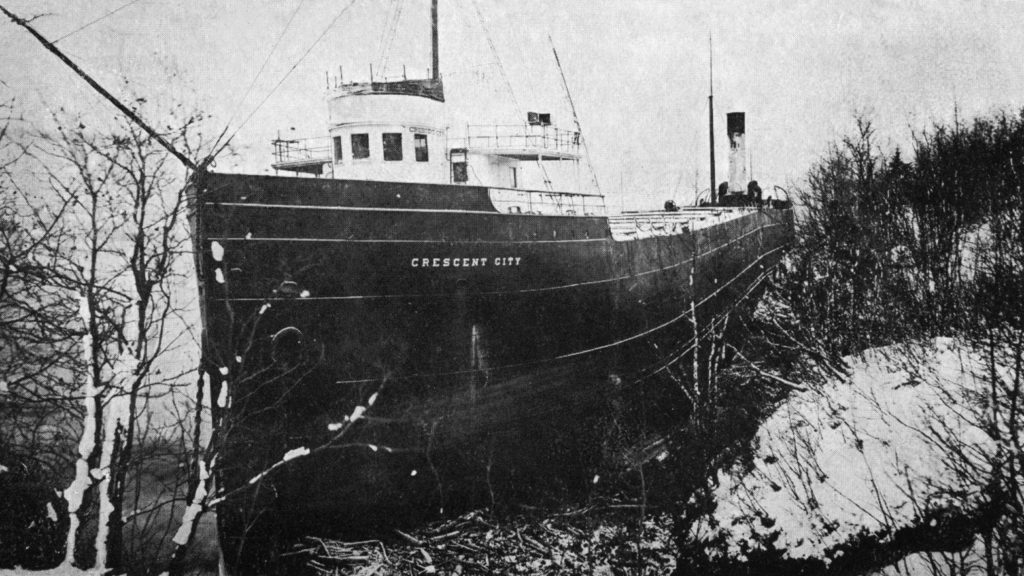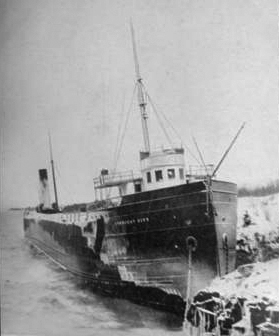The Gales of November: Crescent City Shipwreck
Shortly after midnight on November 28, 1905, the Crescent City dropped anchor in 90-feet of water on Lake Superior. A nor’easter began to blow and the 406-foot steamer was digging in to ride it out several miles from the port in Duluth. After successfully riding the storm for three hours, a great gust of wind struck the ship’s starboard bow, pulling the anchors free from the lake bottom. Capitan Frank Rice ordered full speed ahead with the rudder hard to port, but the 60 to 70 MPH winds kept the ship from making any headway.
After about an hour, Capitan Rice spotted a point of rocky bluff through the driving snow. It was alarmingly close and the Crescent City was drifting, dragging her anchors, straight for it. Rice calculated that the outcropping was going to impale his ship, so he rang the engine room for full reverse. The Crescent City slid past the rocky point and crashed into a low bluff. The ship lurched broadside and a giant wave rolled over the entire ship. The crew was drenched with freezing water, but luckily none were carried overboard. Wave after wave crashed into the Crescent City and the steel hull soon broke in the center.

Captain Rice and his crew realized they would need to abandon the ship before the situation became any more dangerous. Thankfully, the ship’s deck was level with the top of the bluff. A ladder was quickly rigged from the deck of the ship to the bluff. Each of the crew, including the ship’s cook Hattie Stevens, stepped forward and carefully shimmied across the ladder to safety. Once everyone was ashore, the crew gave a weary cheer and set out to discover where they landed.
The sailors were stranded in the woods with a blizzard blowing snow and ice ashore, and their clothes were wet from the waves that crashed across the ship. They needed to find shelter fast. To the west, a glow of lights could barely be seen and the crew determined it could only come from a city like Duluth.


Two members of the crew stayed near the ship while the second mate and the chief engineer set off on foot for downtown Duluth to alert the Pittsburgh Steamship Company of the wreck. The remaining crew sought shelter in the castle-like Duluth municipal water pumping station. After a couple of hours huddled together, the morning light brought the crew out of the pumping station. After a short walk, they were able to catch a morning streetcar into Duluth. Once there, the crew was set up in a hotel downtown. Brandy, dry clothes, and warm blankets were delivered to their rooms. Newspaper reporters clamored for their story and residents gathered in the lobby to catch a glimpse of the lucky crew.
Although the ship was thought to be a total loss and was left where it crashed through the winter, the Crescent City was raised from the rocks and sent back across the lake on June 7, 1906. After a slow journey to Lorain, Ohio on Lake Erie, it was placed in dry dock and successfully repaired. The ship resumed service on the Great Lakes until 1959.
